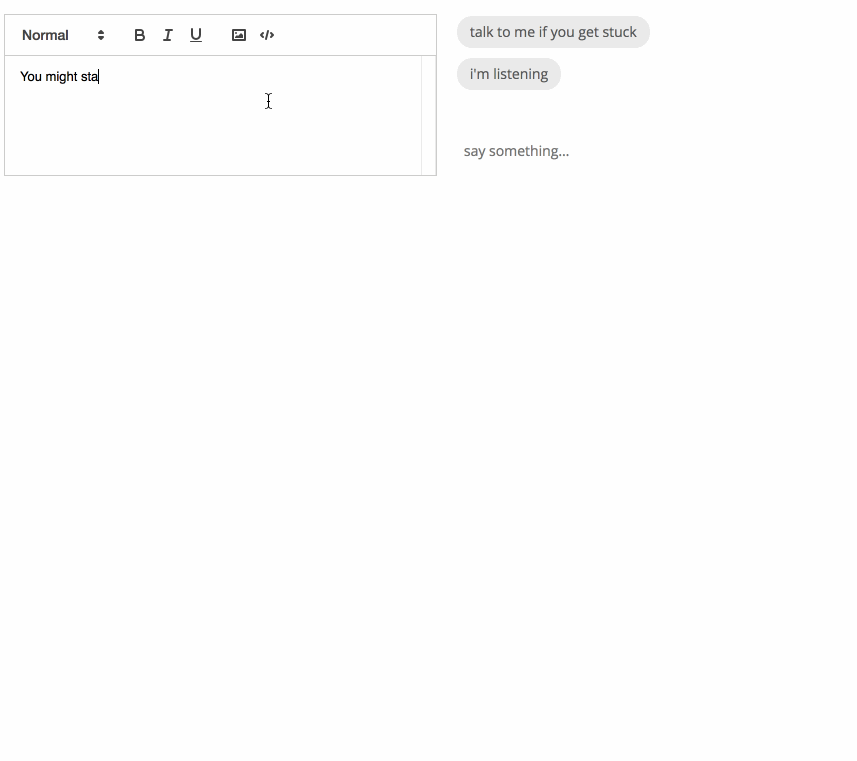part of speech (2018)
Lately I've been struck by how the tools I use subtly shape the way I write, and so how I think. A few months ago, a friend and I wondered: what if we made our own interface for writing? how would it change us?
What frictions do we feel in tools like pen & paper, mobile text editor, desktop text editor? My friend thought writing in conventional interfaces felt too final, so she became afraid to set down words. I realized that I think most clearly in conversation with another, not solo.
So we designed an interface for conversational writing called "part of speech." You can write and edit as usual on the left, and talk with a partner on the right. Its responses are meant to evoke and suggest, not answer. Everything you say on the right will appear on the left.

“part of speech” is a simple, rough prototype that we banged out in a weekend. But it worked. With it I wrote things I couldn’t have written alone—articulated thoughts I couldn't have had alone. Here’s something we wrote:
red like an ocean
green like a tomato
blue like a dollar
I wanted to explore visual tension in language, so I started by saying: “Red like an ocean. Green like a tomato. Blue like a...”
I struggled to complete the trio. Consulting "part of speech" yielded the phrase “income levels,” suggesting “blue like a dollar.” A stunning image!

When you make your own tools, you tend to mold them to fit your hands. So they may fit others' poorly. Other people who tried "part of speech" told me that the experience felt dehumanizing, that the conversation partner's responses felt irrelevant and jarring. I feel that too.
I also don’t use “part of speech” for some forms of writing, for example if I'm coming with a clear outline in mind. I use it for exploratory writing—when I don’t know where I’m going and want to find myself in a place that resonates somehow. Just as in conversation.